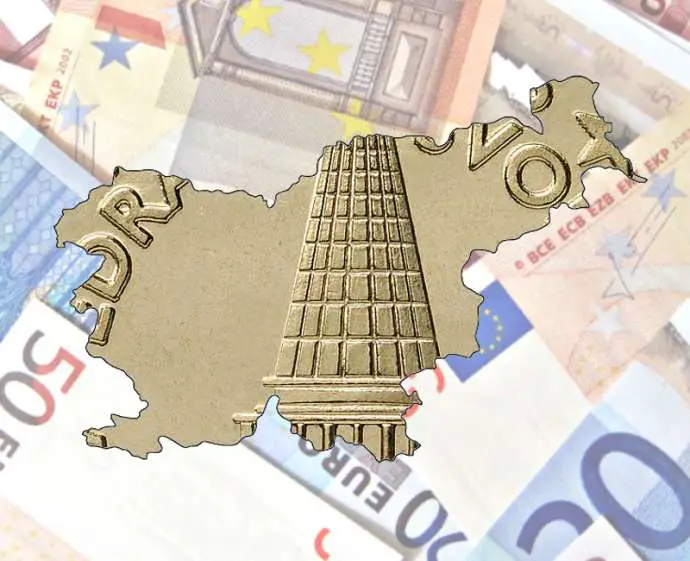Almost 11,000 jobs lost in Slovenia in April
Slovenia's annual retail sales down 15% in March
Brussels projects 7% GDP drop for Slovenia this year, 6.7% recovery in 2021
Almost 11,000 jobs lost in Slovenia in April
STA, 6 May 2020 - The coronavirus crisis is taking a heavy toll on Slovenia's job market with data from the Employment Service showing that 10,793 people were added to the unemployment register in April alone, pushing the total up by 19.9% year-on-year to 88,648.
Since Slovenia declared coronavirus epidemic in mid-March, the number of people registered as unemployed rose by 13,622.
In April alone, the unemployed total rose by 13.9% over March, as 14,419 people were put out of work, 84% more than the month before and over 190% more than in the same month a year ago.
Apart from 6,209 who saw their fixed-term job contracts expire (more than double the month before), 5,616 were made redundant in April, a surge of 130% compared with March and almost 750% more year-on-year. Most of those were employed in the hospitality sector, followed by manufacturing and retail.
A further 481 of those who were added to the unemployment register were first-time job seekers (up 12% from March) and 164 lost jobs as their companies went bankrupt (up 61%).
Out of 3,626 who were removed from the unemployment register, 2,373 found a job or became self-employed. That is 61% fewer than in March and almost 60% fewer than in April 2019.
The most pronounced increase in unemployment was registered by the Kranj unit of the Employment Service, at more than 22% month-on-month and over 37% year-on-year.
Employers reported 4,336 vacancies in April, 41% fewer than in March and 60% fewer than the same month a year ago. Most job openings were for welders, builders and lorry drivers.
The last available data for the registered unemployment rate are for February, that is before the epidemic, standing at 7.9%, down 0.3 of percentage points from January and down half a point compared with February 2019.
Slovenia's annual retail sales down 15% in March
STA, 6 May 2020 - The EU's retail sector was severely affected by Covid-19 lockdown measures in March at monthly and annual levels, Eurostat latest figures show. Slovenia's posted an annual drop of 15.1%, the second steepest fall in the entire EU, behind France (-16%). This compares to the EU's average drop of 8.2% and the eurozone's 9.2%.
Hungary's retail sector meanwhile posted the highest annual rise, that of 3.5%, followed by Romania at 3.1%.
At the monthly level, the eurozone's retail sector saw its sales drop by 11.2%, while the drop at the EU level was slightly less pronounced, at 10.4%.
The drop in Slovenia was above average, at 13.5%.
Sales of non-food items and fuels posted the steepest drops; non-food items were down 23.1% in the eurozone and 20.8% in the EU, and fuels 21.3% and 19.3%, respectively.
Brussels projects 7% GDP drop for Slovenia this year, 6.7% recovery in 2021
STA, 6 May 2020 - In its first economic forecast following the imposition of measures in EU member states to contain the coronavirus pandemic, the European Commission has projected that Slovenia's gross domestic product (GDP) will drop by 7% this year compared to 2019, while a 6.7% recovery is expected in 2021.
This is a significant correction compared to the Commission's forecast in February, in which Slovenia was expected to record a 2.7% growth of GDP this and next year.
The spring forecast for 2020 and 2021 for Slovenia is nevertheless somewhat better than for the entire eurozone on average, which stands at -7.7% for this year and +6.3% for next year.
The European Commission notes that economic growth in Slovenia had already been slowing in the second half of 2019, when investment spending started to hit the brakes. "As a small open economy, Slovenia is particularly vulnerable to the effects of the Covid-19 pandemic."
The forecast adds that the country's economy is projected to shrink significantly in 2020, but the stimulus package announced by the authorities is expected to partly cushion loss of jobs and household incomes and pave the way to a strong rebound in 2021.
"Public finances are expected to go into significant deficit in 2020, due to the loss of revenues and the sizeable measures to support the economy, and to improve in 2021 together with the recovering economy."
The Commission notes that Slovenia entered the coronavirus crisis in a relatively strong position, but supply disruptions and containment measures are expected to produce strong negative effects, especially in the first half of 2020.
The export of services, particularly transport and tourism, is expected to be exceptionally weak this year, and new investment decisions in the private sector are likely to be largely postponed towards 2021.
Slovenia's economic activity is meanwhile expected to grow by about 6.7% in 2021, but this means that GDP would not fully recover its 2019 level by the end of next year.
The government measures are expected to dampen the impact on the labour market, but nevertheless, the unemployment rate is expected to increase from last year's 4.5% to 7%. The rate is expected to decrease again to around 5% in 2021.
Annual inflation is projected to fall to 0.5% this year due to low energy prices and weak demand, before rising to 1.2% in 2021.
This year, the general government balance is forecast to deteriorate to a deficit of around 7.2% of GDP due to the projected decline in economic activity and the Covid-19 measures.
In 2021, under the assumption of no-policy-change and that the anti-epidemic measures will only have a temporary effect in 2020, the general government deficit is expected to decrease to around 2% of GDP.
Slovenia's debt-to-GDP ratio is forecast to increase significantly to around 83.7% of GDP in 2020, and to start declining again in 2021.







